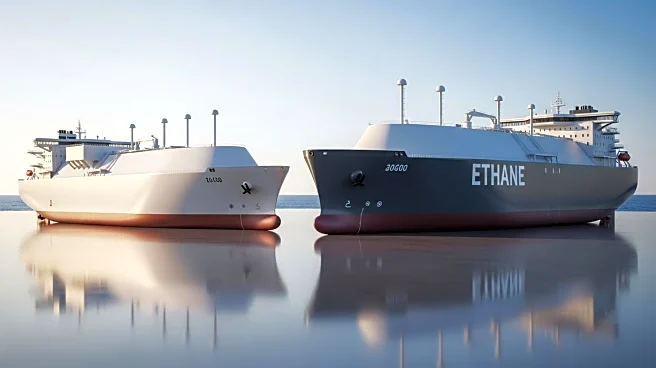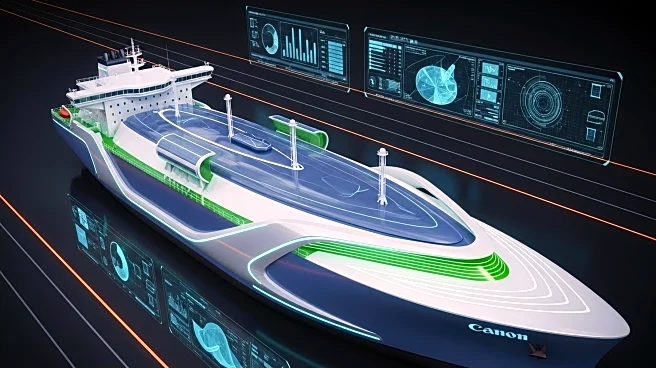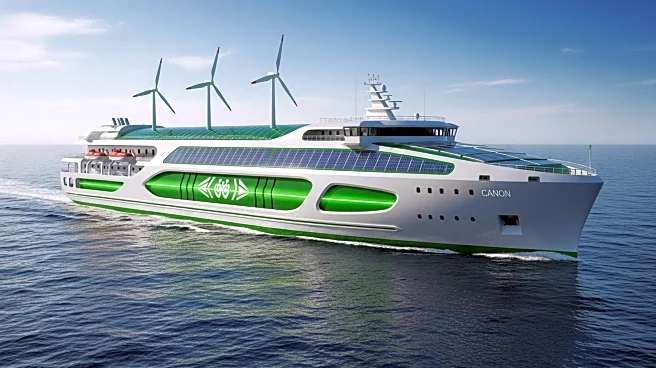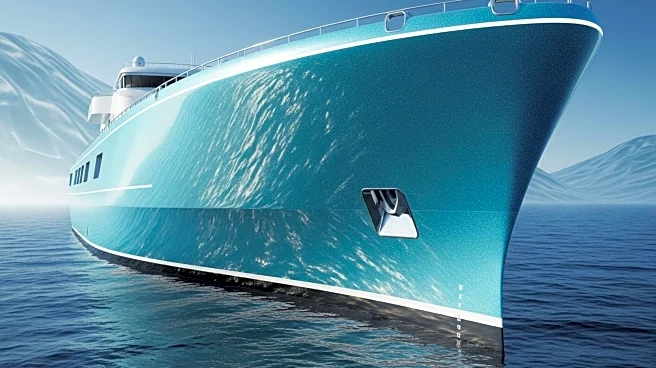What's Happening?
DNV has granted an Approval in Principle (AiP) to HD Hyundai Heavy Industries (HD HHI) for their innovative designs of next-generation LNG carriers (LNGC) and Very Large Ethane Carriers (VLEC). These designs, unveiled at Gastech 2025, incorporate forward accommodation and Wind-Assisted Propulsion Systems (WAPS). The LNGC design features four tiltable rotor sails from Norsepower, while the VLEC design includes two. This marks the first time HD HHI has combined a forward accommodation layout with rotor sail technology. The designs have been evaluated for compliance with DNV’s WAPS notation, ensuring they meet the necessary technical standards. The forward accommodation concept aims to address challenges such as COLREG compliance and visibility issues, while enhancing fuel efficiency and reducing emissions.
Why It's Important?
The approval of these designs signifies a significant step towards more sustainable maritime operations. By integrating wind-assisted propulsion, these vessels are expected to achieve greater fuel efficiency and lower emissions, aligning with stringent environmental regulations. This development is crucial for the shipping industry, which is under increasing pressure to reduce its carbon footprint. The collaboration between DNV and HD HHI highlights the industry's commitment to innovation and sustainability. The successful implementation of these designs could set a precedent for future vessel designs, encouraging other shipbuilders to adopt similar technologies.
What's Next?
As these designs move forward, HD HHI and DNV will likely continue to refine and test the technologies involved. The successful deployment of these vessels could lead to broader adoption of wind-assisted propulsion systems in the maritime industry. Stakeholders, including environmental groups and regulatory bodies, will be watching closely to assess the impact of these innovations on emissions reduction. The shipping industry may see increased investment in similar technologies as companies strive to meet global environmental targets.
Beyond the Headlines
The integration of wind-assisted propulsion in large carriers could have long-term implications for maritime engineering and design. This approach not only addresses current environmental challenges but also paves the way for future advancements in sustainable shipping. The collaboration between HD HHI and DNV may inspire further partnerships aimed at developing eco-friendly maritime solutions. Additionally, the success of these designs could influence regulatory frameworks, encouraging more stringent environmental standards across the industry.











